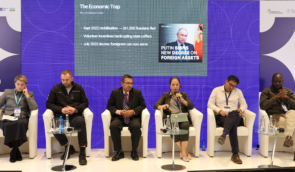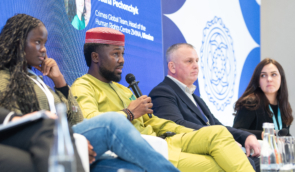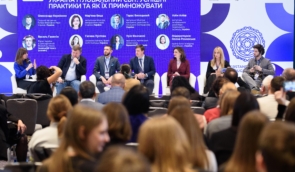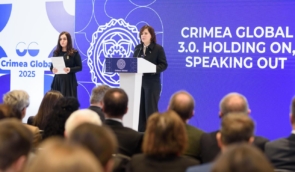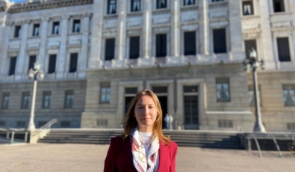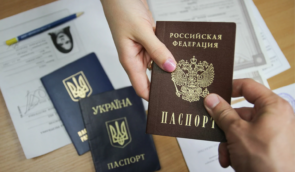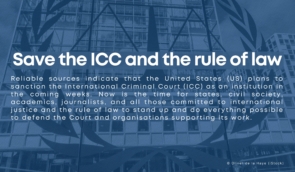“Drone safari” against the civilian population: second panel discussion within “Crimea Global”
As part of the Third International Conference “Crimea Global. Understanding Ukraine through the South,” the second panel discussion, “The ‘Black Mirror’ Series We Live In: ‘Drone Safari’ and Other Modern Means of Waging War Against Civilians,” took place. The discussion focused on how authoritarian regimes use new technologies against peaceful citizens.

The panel brought together: Serhii Ivashchenko, Head of the Antonivka administrative district; Mykhailo Lynetskyi, First Deputy Head of the Kherson City Military Administration; Vitalii Poberezhnyi, researcher at Truth Hounds; and Su Mon Thant, Senior Analyst on the Asia-Pacific Region at ACLED.
The discussion was moderated by Hanna Shelest, Director of the Security Studies Program at the Foreign Policy Council “Ukrainian Prism”.
Mykhailo Lynetskyi emphasized that in 2025 Russia significantly intensified its attacks, including drone strikes, artillery fire and other types of weaponry. Compared to 2024, their number tripled, leading to a substantial increase in the number of those killed and injured. He underscored that the majority of victims suffered from drone attacks, including children, and reported that more than 1,500 people were injured from the beginning of the year to October.
“Every Russian soldier, every drone operator who knowingly participates in attacks against civilians is a war criminal. And for many years we will continue appealing to the international community so that everyone who deliberately directs their weapon of death at police officers, paramedics, utility workers or gatherings of elderly people at humanitarian aid distribution points faces fair and unavoidable punishment.“
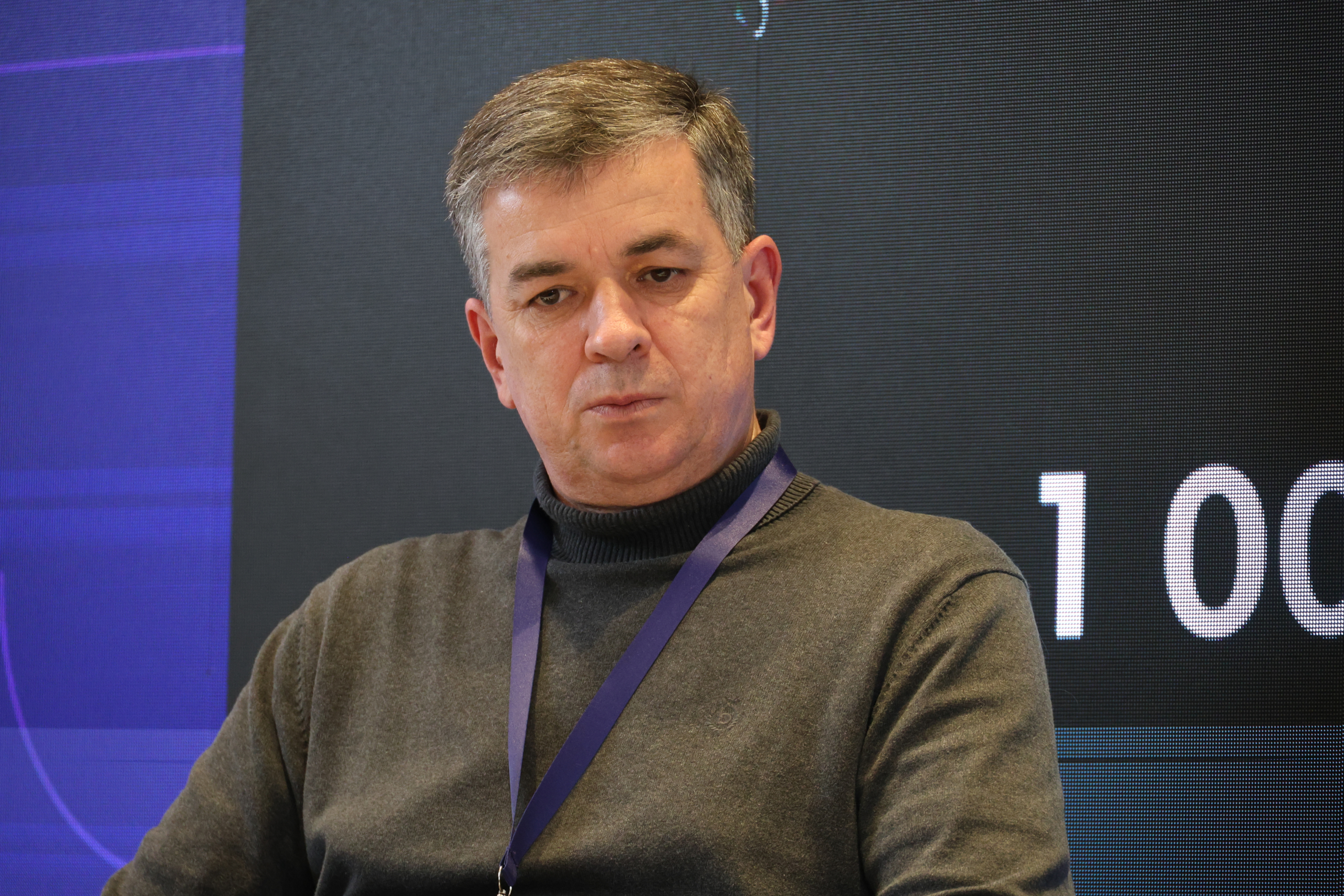 Photo: Mykhailo Lynetskyi
Photo: Mykhailo LynetskyiThe head of the Antonivka administrative district, Serhii Ivashchenko, said that the settlement of Antonivka is located just 2 kilometers from the front line. “Before the full-scale invasion, the settlement had about 13,000 residents who had dreams, were building things, planning for the future. And then evil came, which destroyed everything — and continues destroying to this day. Around 300 people remain in the riverside area of the district and about 600 in the urban area,” Ivashchenko says.
The district suffers daily from dozens of drones that attack civilian homes and kill residents. In addition, the occupiers wage war against civilians in the territories they have seized, installing surveillance cameras, listening to phone calls, blocking messaging apps, and confiscating mobile devices to extract information. This turns the temporarily occupied territories into an actual “exclusion zone“, where the daily reality of residents is filled with fear, restrictions on freedom, and a constant threat to life.
 Photo: Serhii Ivashchenko
Photo: Serhii IvashchenkoDuring his presentation, Vitalii Poberezhnyi introduced the Truth Hounds report “Kill Zone: How Russian Drones Devastate the Right Bank of the Dnipro“, stressing that Russia systematically terrorizes civilians using cheap and precise FPV drones that are easy to produce and operate until impact. He also noted that the number of killed and injured is growing, UAV attacks exceed artillery strikes, and the targeted hits on civilians and service workers show the deliberate nature of these attacks, as confirmed by UN monitoring and local councils.
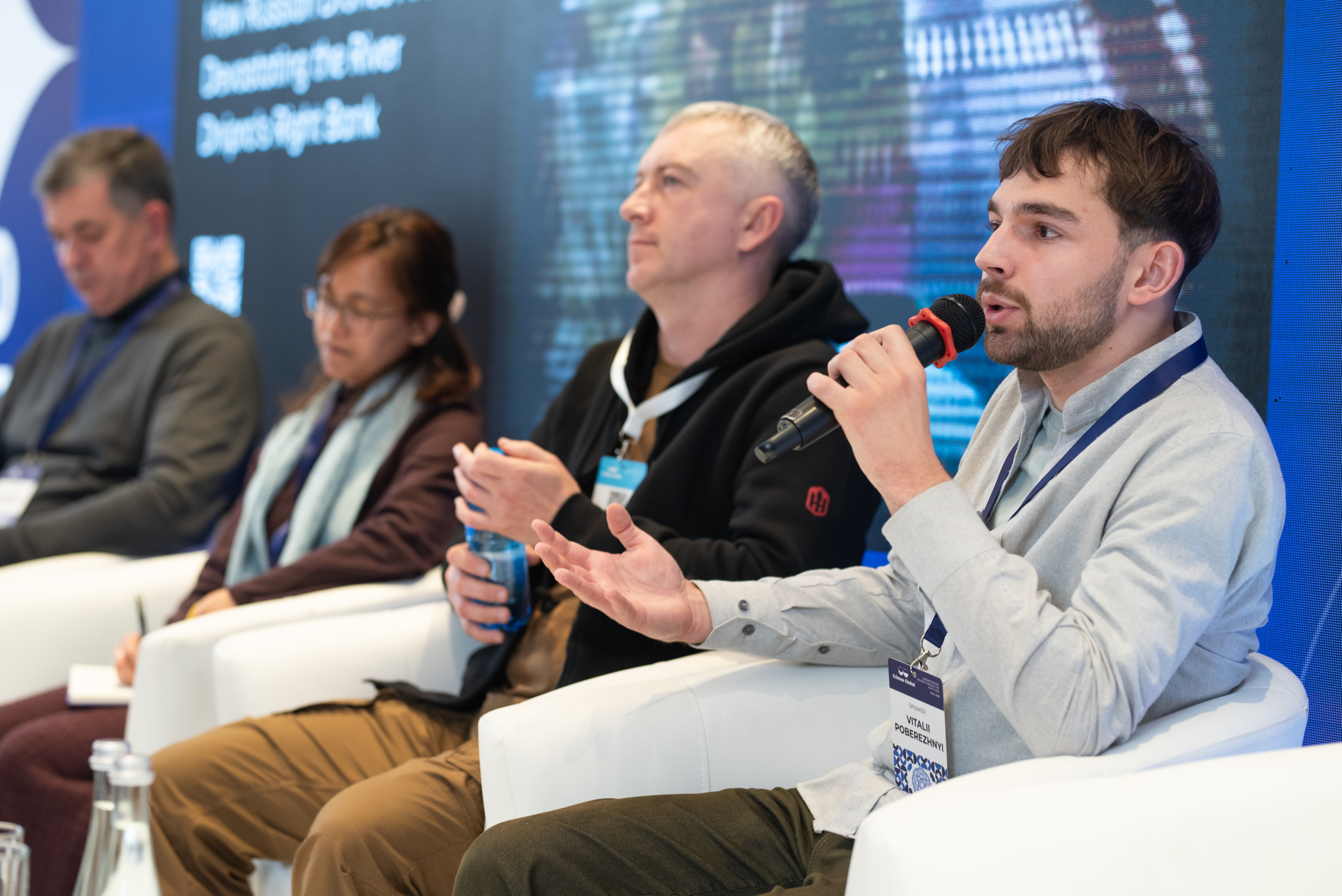 Photo: Vitalii Poberezhnyi
Photo: Vitalii PoberezhnyiThe rapid development of technology is creating new challenges in other parts of the world as well. In particular, a Senior Analyst from ACLED, Su Mon Thant, spoke about the Asia Pacific region. Myanmar is actively using drones: this is driven by the war that has been raging in the country since the military coup in 2021. Initially, new technologies were used by resistance groups, and later the military junta also adopted them with support from Russia, China, India and Belarus. Today, more than 3,300 armed groups operate in the country, and the conflict has turned into a full-scale war, in which an estimated 90,000 combatants and civilians have already been killed.
According to her, Myanmar is currently among the top three countries in the world in terms of drone use and ranks first in the Asia-Pacific region. Overall, more than 4,000 drone-related incidents have been recorded in the region — the most in Myanmar, followed by Pakistan, Afghanistan and India in terms of intensity. About 10% of these attacks in Myanmar were directed specifically at civilians and civilian infrastructure.
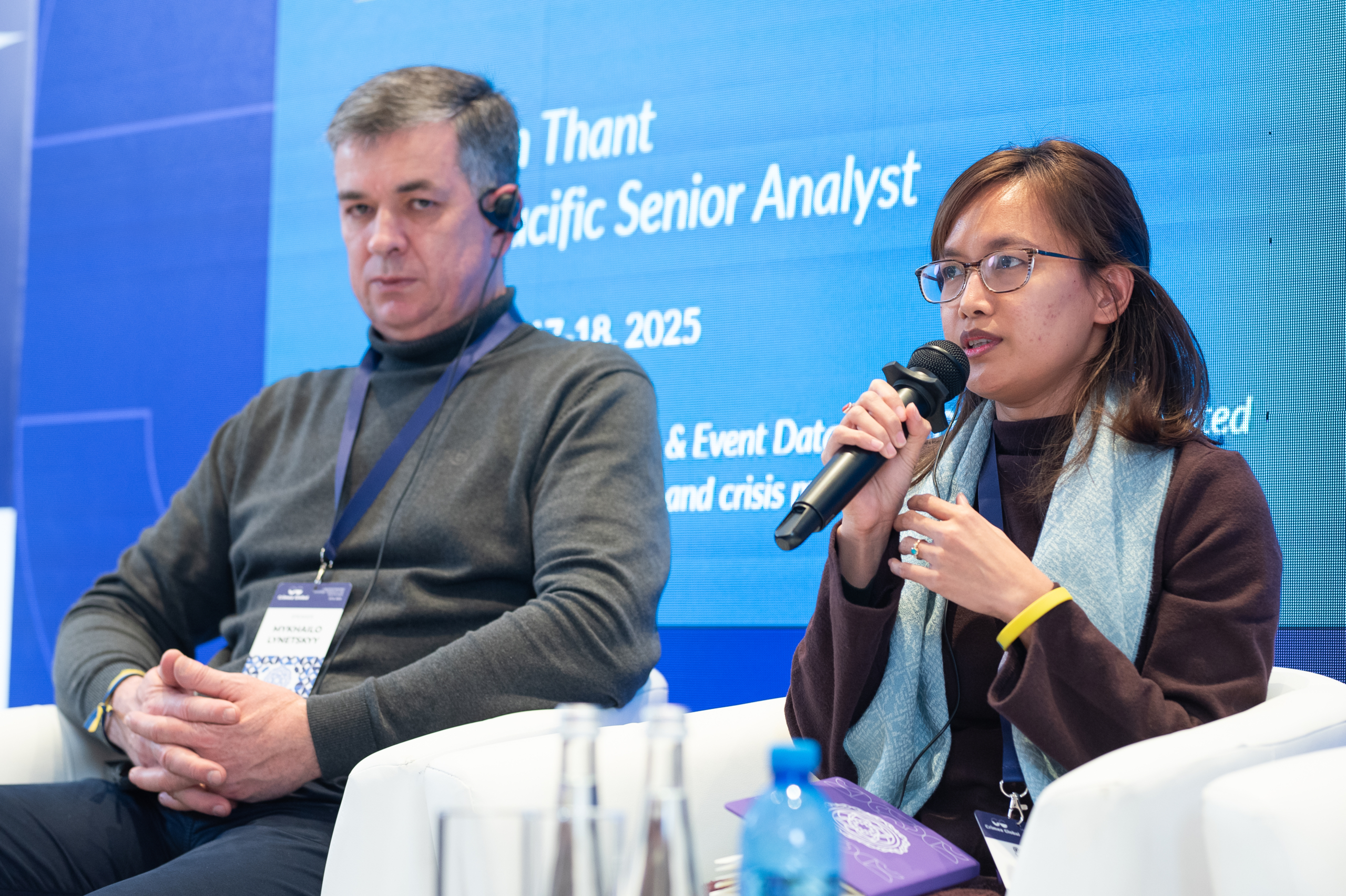 Photo: Su Mon Thant
Photo: Su Mon Thant“We are witnessing an arms race in the field of drones and air-defense systems, but we see almost no efforts to introduce control mechanisms,” Su Mon Thant noted. “In the case of Myanmar, the military deliberately targets civilians to intimidate people and undermine support for the resistance forces: they carry out drone strikes and airstrikes on religious events, social gatherings such weddings and festivals, as well as on monasteries, churches and schools. We must work together to find ways to better protect civilians.“
Additionally, Assaad al-Achi, President of the Syrian Center for Media and Freedom of Expression, delivered a special address to the panel. He shared the experience of rebuilding the country after the fall of Bashar al-Assad’s regime. He emphasized that Ukraine and Syria have many common grounds for cooperation, not only because of a shared enemy, but also because of similar challenges in rebuilding the state, society, and economy after war.
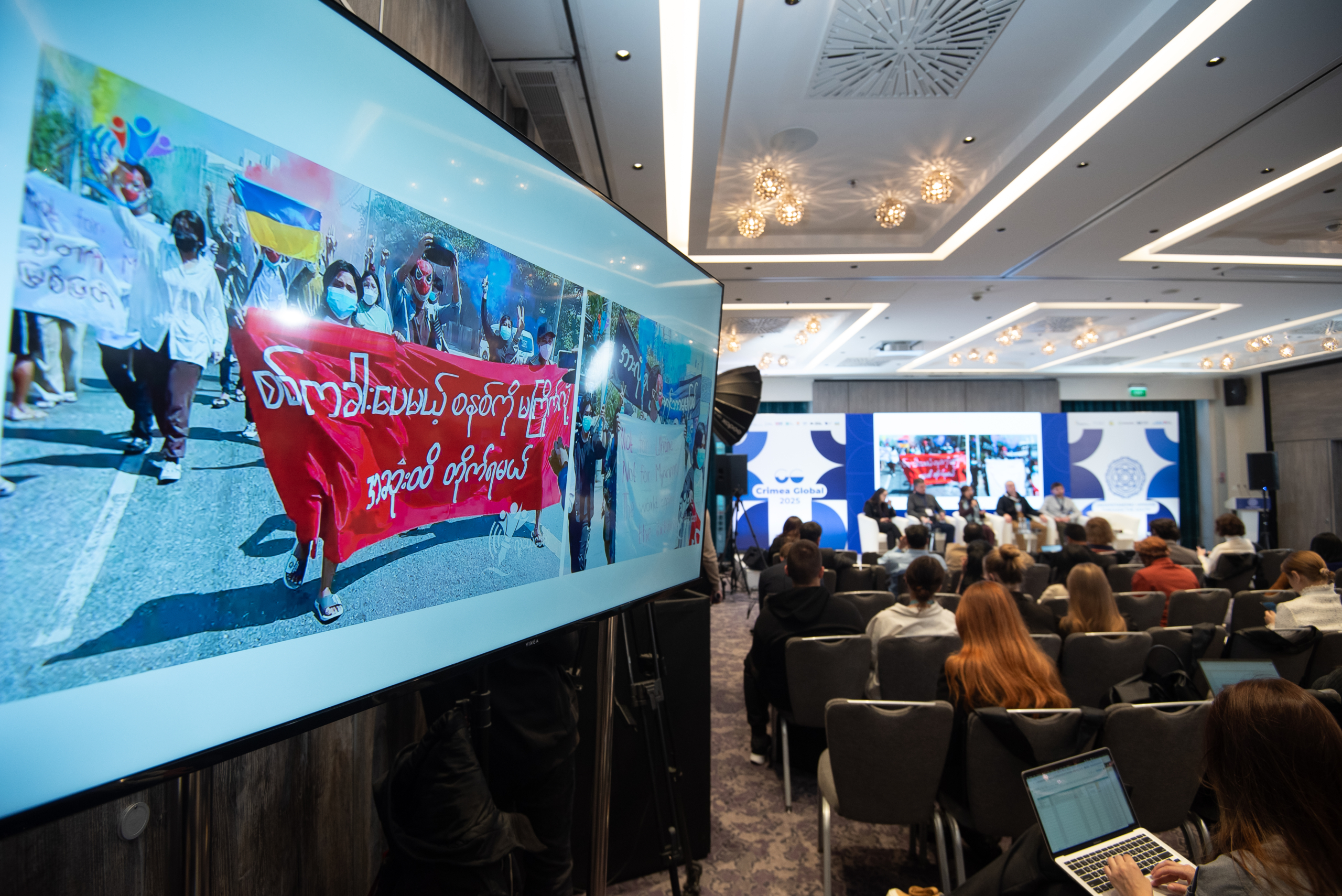
Оn November 14, the conference participants visited Lviv, where they met with Lviv Mayor Andriy Sadovyi and his First Deputy Andriy Moskalenko at the Lviv City Hall, honored the memory of the fallen defenders of Ukraine at the Field of Honor at Lychakiv Cemetery and visited the UNBROKEN National Rehabilitation Center and the Prosthetics and Orthotics Center.
On November 15, the participants of the international conference “Crimea Global. Understanding Ukraine through the South” continued their visit to Ukraine and travelled to Kharkiv, where they met with the leadership of the Kharkiv Regional Military Administration, visited Pivnichna Saltivka and saw the scale of the destruction from the Russian attacks. International experts also learned about Kharkiv’s modern security solutions and visited an underground school — the Korotych Lyceum. Members of the delegation honored the memory of the children killed in the war and laid toys at the memorial symbolizing lives cut short by the conflict.
On November 16, Guests of the “Crimea Global” conference arrived in Kyiv, where the Office of the Mission of the President of Ukraine in the Autonomous Republic of Crimea / Crimea Platform hosted a closed-door roundtable titled “Ukraine’s Resilience in War: Challenges, Responses, and International Support.”
Organizers: Mission of the President of Ukraine in the Autonomous Republic of Crimea / Office of the Crimea Platform, Human Rights Centre ZMINA, Media Initiative for Human Rights.
Partners: Ukrainian Institute, PEN Ukraine, Truth Hounds, Media Center Ukraine, Transatlantic Dialogue Center.
The initiative is organized with the support of the Partnership Fund for a Resilient Ukraine (PFRU), the International Renaissance Foundation, the Prague Civil Society Centre, the Norwegian-Swedish Askold and Dir Fund, administered by ISAR Ednannia, and UN Women.
Photos: Mission of the President of Ukraine in the Autonomous Republic of Crimea.
If you have found a spelling error, please, notify us by selecting that text and pressing Ctrl+Enter.

